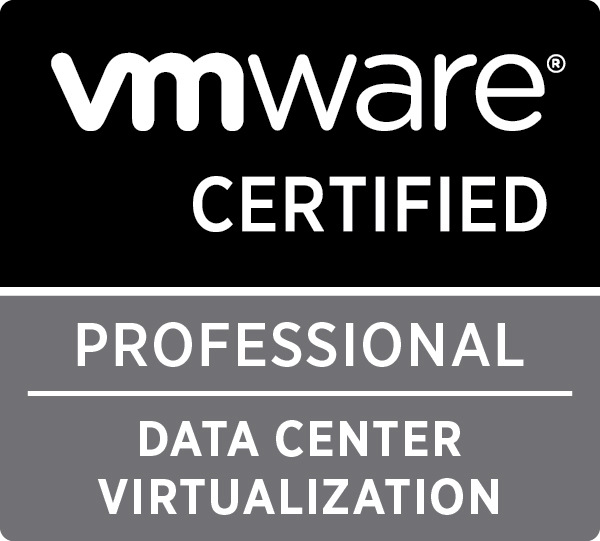There are different paths to be VMware Certified Professional 5 – Data Center Virtualization (VCP5-DCV), but the big requirement is have official training which costs loads of money, specially if you are running alone in this journey.
To fill this requirement you can use Training Partners of VMware or using VMware IT Academies (VITA), which are much more cheap (just found a few of them).
This will be fun over next weeks :)
Objectives
By the end of the course, you should understand vSphere 5.5 functions and features and be able to meet the following objectives:
• Deploy an ESXi host
• Deploy a vCenter Server instance
• Deploy a vCenter Server appliance
• Manage an ESXi host using vCenter Server
• Manage ESXi storage using vCenter Server
• Manage ESXi networking using vCenter Server
• Manage virtual machines using vCenter Server
• Deploy and manage thin-provisioned virtual machines
• Migrate virtual machines with VMware vSphere® vMotion®
• Manage vSphere infrastructure with VMware vSphere® Web Client and VMware vSphere® Client™
• Migrate virtual machines using VMware vSphere® Storage vMotion®
• Manage access control using vCenter Server
• Monitor resource usage using vCenter Server
• Manage VMware vSphere® High Availability, VMware vSphere® Fault Tolerance, and VMware vSphere®
Data Protection™ using vCenter Server
• Apply patches using VMware vSphere®Update Manager™
Outline
- Course Introduction
- Introductions and course logistics
- Course objectives
- Virtualized Data Center
- Introduce components of the virtualized data center
- Describe where vSphere fits into the cloud architecture
- Install and use vSphere Client
- Creating Virtual Machines
- Introduce virtual machines, virtual machine hardware, and virtual machine files
- Deploy a single virtual machine
- VMware vCenter Server
- Introduce the vCenter Server architecture
- Introduce VMware® vCenter™ Single Sign-On™
- Install and use vSphere Web Client
- Introduce VMware® vCenter™ Server Appliance™
- Configure and manage vCenter Server Appliance
- Manage vCenter Server inventory objects and licenses
- Configuring and Managing Virtual Networks
- Describe, create, and manage a standard switch
- Describe and modify standard switch properties
- Configure virtual switch load-balancing algorithms
- Configuring and Managing Virtual Storage
- Introduce storage protocols and device names
- Configure ESXi with iSCSI, NFS, and Fibre Channel storage
- Create and manage vSphere datastores
- Deploy and manage VMware® Virtual SAN™
- Virtual Machine Management
- Use templates and cloning to deploy virtual machines
- Modify and manage virtual machines
- Create and manage virtual machine snapshots
- Perform vSphere vMotion and vSphere Storage vMotion migrations
- Create a VMware vSphere® vApp™
- Access and Authentication Control
- Control user access through roles and permissions
- Configure and manage the ESXi firewall
- Configure ESXi lockdown mode
- Integrate ESXi with Active Directory
- Resource Management and Monitoring
- Introduce virtual CPU and memory concepts
- Describe methods for optimizing CPU and memory usage
- Configure and manage resource pools
- Monitor resource usage using vCenter Server performance graphs and alarms
- High Availability and Fault Tolerance
- Introduce the new vSphere High Availability architecture
- Configure and manage a vSphere HA cluster
- Introduce vSphere Fault Tolerance
- Describe VMware vSphere® Replication
- Scalability
- Configure and manage a VMware vSphere® Distributed Resource Scheduler™ (DRS) cluster
- Configure Enhanced vMotion Compatibility
- Use vSphere HA and DRS together
- Patch Management
- Use vSphere Update Manager to manage ESXi patching
- Install vSphere Update Manager and the vSphere Update Manager plug-in
- Create patch baselines
- Scan and remediate hosts
- Installing VMware Components
- Introduce ESXi installation
- Describe boot-from-SAN requirements
- Introduce vCenter Server deployment options
- Describe vCenter Server hardware, software, and database requirements
- Install vCenter Server (Windows-based)
